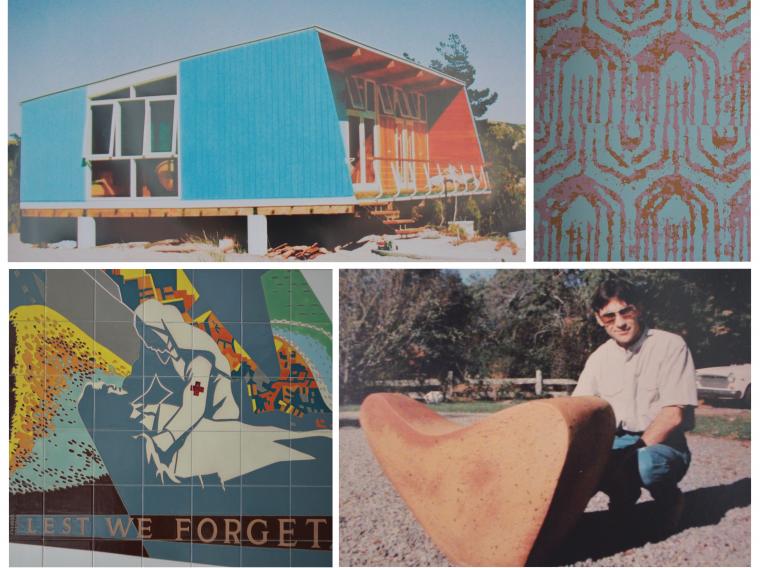One of the interesting things about Modernism (an era roughly spanning the 1920s to 60s) was the fervent belief in the power of human beings to carve out better modes of living, using efficient and what we would now call ‘smart’ design, to reshape their environments for the greater good.
Ernst Pliscke was an Austrian émigré architect and town planner who came to New Zealand to escape Nazism in 1939. He designed many residences and plans for towns including Naenae where he advocated a central plaza (based on St Mark’s Square in Venice), with shops, offices, child-care centres and – most radically – sheltered cafes with outdoor seating! A watered-down version was finally adopted but one wonders how the town might have been transformed if his original plan had been implemented in full.
This era of New Zealand’s design history is fast becoming better documented. Recently published is ‘Beyond the State – NZ State Houses from Modest to Modern’ (which describes Pliscke’s plans for Naenae). One of its authors, Bill McKay will be speaking at Aratoi next month as part of Gregory Smith’s new exhibition ‘Masterton Modern’, which highlights the architects, teachers, artists and craftspeople who embraced the progressive approach close to home.
Smith paints a picture of a thriving arts community in the 1950s and 60s, centred around local people such as William and Maureen Mason who had a base in Moreton Rd, Carterton for their textile and wallpaper printing business Mason Handprints. Potter Jim Greig and artist Rhondda Greig further contributed to artistic innovation in the region.
In architecture, Modernism was all about ‘honest’ use of materials, free of the heavy ornamentation of previous styles. Design was guided by the use of the building and the needs of its occupants, and Masterton has some important examples still standing such as the War Memorial Stadium, and Masters Crescent, a state housing project built in 1938 along pleasant ‘Garden Suburb’ lines.
It’s important to retain this recent history, says Smith, who has set up the website ‘Lost Property.org.nz’ to this end:
“Much of the knowledge, oral and actual, is in people’s own libraries and memories, so it is important to write it down,” he says. He worked with Wairarapa Archive and interviewed many people including Rhondda Greig, and Lydia Wevers, daughter of the architect Matheus (Bart) Wevers.
“Although many of these people had been well known and prolific, they had not been well documented like some others, and their stories are equally interesting.”
It is easy to dismiss some of Modernism’s utopian ideals but there’s no denying that communities are affected by their built and natural environments. Think of Featherston residents who have had for several years an ugly expanse of concrete where their town centre should have been. Perhaps the planners there could cast a glance at some of the early schemes for healthy, effective towns - they might be surprised at how innovative they still appear.
Event: Bill McKay Senior Lecturer / Associate Head, School of Architecture, will talk on the development of the State House on 9 May, 2-3pm.
Currently showing at Aratoi: Masterton Modern, until 31 May; Four hundred shades of DMC: Margaret Milne, until 3 May; Te Matatini Mauri, until 11 May; A Gathering: John McLean, until 10 May; Hong Kong Song – Madeleine Slavick, until 10 May; Settling the land: Order out of Chaos?, until 10 May.
